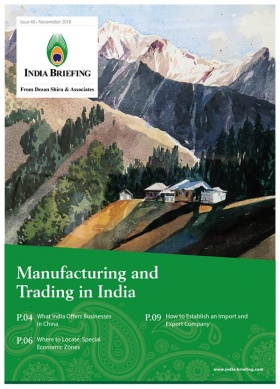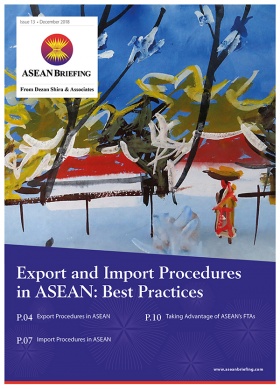Non-Financial FIEs in China Saw Revenues Grow by 19.8% in 2018. What Does this Mean?
Op/Ed by Chris Devonshire-Ellis
A survey by financial intelligence provider FactSet, and featured in a comprehensive article in the Financial Times, indicates that non-financial foreign-invested enterprises (FIEs) in China grew by 19.8 percent last year, up from 13.9 percent in 2017. The survey covered nearly 3,000 foreign businesses, excluding the financial services industry. That means that the figure is not swayed by the big banks, insurance companies, and so on, and are mainly industrial and service economy related.
Considering the huge amount of negative media attention paid to China in the past 18 months – whether from the perspective of its Belt and Road Initiative (BRI), the perceived China slowdown, and the ongoing rumblings of a trade war – these results could come across as surprising. But are they?
The survey clearly shows that key industrial sectors like retail, auto, and consumer-based businesses have not flourished over the past year. The electronic consumer goods, in particular, has performed erratically. For example, Apple’s sales grew nearly 18 percent in its fiscal year ending September 2018, but contracted 27 percent during the three months to December. However, sectors like energy and healthcare showed signs of growth.
While US-China trade has taken a hit, that is a different animal from foreign investment, as I pointed out in March in the article ‘The US-China Trade War and Declining Trade – We’ve Been Here Before’.
The headlines today, however, are full of the tariffs that the US and China have slapped on each other and may continue to ramp up. These figures, though, will impact the bilateral trade volume, but not necessarily investment, as the FT piece shows. Why? Because China is still a great place to invest and get a return on your money. GDP growth in China this year is expected to be about six percent, and may decrease according to some economists by up to 1.5 percent if the trade war is factored in. But this still compares positively with the EU at 1.5 percent and the US at 2.3 percent (which could be less if the trade war impact is included).
As for the rest of developing Asia, 2019 GDP growth rates in India are set to be 7.3 percent, Vietnam seven percent, Indonesia six percent, and the Philippines eight percent. It’s a similar story across much of emerging Asia, from Cambodia to Sri Lanka, and all the points in between. Look again at the World Bank 2019 forecast for global GDP growth – 2.9 percent – and look at China’s, at six percent. It doesn’t look so bad in China, right?
This is also supported by data provided by the recent Eurocham and Amcham White papers. The Eurocham 2018 Business Confidence survey suggests that while there are the usual barriers and issues to certain new industries entering the China market, existing EU investors in China continue to do well. It’s a similar story with the Amcham China 2019 survey – US businesses grew in China last year, industry variants notwithstanding.
We also see this with our clients at Dezan Shira & Associates. We possess a significant, multi-billion dollar portfolio of American, European, and British clients in China, as well as from many other major markets. There are grumbles, of course, but very few, if any, are leaving China. Why? The bottom line is they make money here and will continue to do so. That is the China reality.
However, there are other issues as to what these numbers mean. It means that despite the US-China trade war, China will remain a great destination in which to invest. US trade will fluctuate wildly, and the behavior of the US and its trade policies has become unpredictable and will probably remain so. That’s not good for business – especially for American companies.
The paradox is that while the US twists and turns its trade policy, China remains pretty readable – you know what you’re going to get. That preparation manifests itself in the free trade agreements China has been busy signing off this past 15 years, combined with the loose MoU agreements concerning the Belt and Road Initiative. The US, meanwhile, has just sat still. Many of its FTAs are outdated and largely irrelevant. That’s about to be exposed as a huge mistake.
China has been going in the opposite direction and opening up trade corridors, just at the same time that the US has become far more protectionist. The ripping up of the Trans-Pacific Partnership was just the start; now, we have a US-China trade war. This means, I suspect, that new lines have been drawn, and crossed, and the trade war may be with us for some time. If so, China will win, and it will be the US who blinks first. It is China, not the US, who can absorb a 1.5 percent GDP loss, and it is China, not the US, who are free from the fiscal stock market demands to post constantly improved results every three months.
Then there is the rest of Asia, all partially fueled by Chinese growth and investment. Again, I commented on this recently, when Western media yet again picked up on the notion of a “China slowdown”. In the piece ‘A China Slowdown? More Like an Asian Manufacturing Boom’, I highlighted again the opportunities in China and the rest of Asia. For foreign businesses, the message is and remains very clear: China – and Asia at large – are the places to be to make a decent return on your investment. Now that’s what I call dependable.
About Us
Dezan Shira & Associates have over 25 years worth of experience in assisting foreign investors in Asia, and have a network of offices across China, India, the ASEAN nations, Russia, and Europe. For sourcing assistance please email us at tariffs@dezshira.com or visit us at www.dezshira.com.
- Previous Article Sourcing Products from the US? Here’s What to Do about the New China Import Tariffs
- Next Article US-China Trade War “Likely to Tip Some China-Based American Manufacturers to Vietnam”








